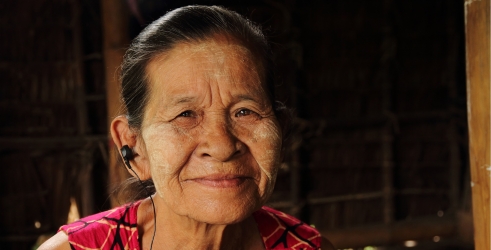
Last week I was delighted to represent HelpAge International at the International Disability and Development Consortium (IDDC) general assembly to discuss how people with disabilities may face additional discrimination on the basis of age and gender.
IDDC is a global consortium of disability and development NGOs, mainstream development NGOs and disabled people’s organisations supporting disability and development work in more than 100 countries around the world.
The backdrop to this meeting was the recently agreed Sustainable Development Goals (SDGs) and, in particular, the commitment to “leave no one behind”. Much like older men and women, people with disabilities were predominantly marginalised by the Millennium Development Goals, which preceded the SDGs. However, thanks to the members of the IDDC and its partner the International Disability Alliance, people with disabilities enjoyed a great deal of visibility in the process to develop the SDGs. They are explicitly referenced in the final outcome document – Transforming our World: The 2030 Agenda for Sustainable Development.
Leave no one behind – action for the most discriminated groups
A key theme throughout the IDDC general assembly was the need to focus on the most discriminated groups among people with disabilities, particularly looking at people with different types of disability.
For example, people who are deafblind or have intellectual or psycho-social disabilities have often not been included in disability development programmes on equal terms with individuals with other types of disabilities. Often it is the people who find it most difficult to communicate that are marginalised. This imbalance must be addressed, and the assembly did recognise the need.
In addition to the focus on discrimination by type of disability, the intersections between disability, age and gender ignited lively discussions, and the broad consensus among participants was that IDDC should integrate these issues into its activities going forwards.
Moving out of our silos
Disability rates are higher among older men and women, reflecting the accumulation of health risks across the life course, of disease, injury and, in this case, chronic illness. Unless we look also at disability in relation to both age and gender, large cohorts of people with disabilities may be being excluded from both policy and programming work.
The solution must start with data disaggregation that reflects the multiple types of discrimination people face. Only by understanding who is being left behind can we adequately respond to their needs.
Of course, those of us working for older people face the same risk. If we focus exclusively on a person’s age, without regard to disability and gender, or other status including ethnicity, income, location and migratory status, specific sub-groups are likely to be marginalised within the wider population of older people.
The commitment to leave no one behind is as much a challenge to civil society as it is to governments planning to implement the SDGs. It requires us to look forensically both within and beyond the normal boundaries of our work on ageing.
It is fantastic to see HelpAge and the IDDC meet for discussions. Bringing the two networks together allows for the needs of both older men and women and people with disabilities to be better served. I hope that we can continue to build on this relationship and the discussions to improve the lives of these vulnerable groups.
